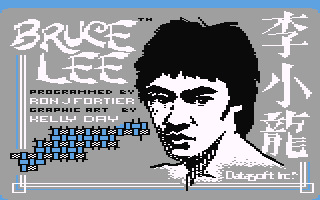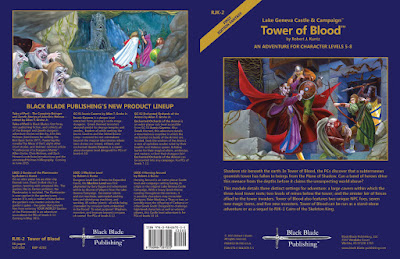Desmond Tutu's old adage---"How do you eat an elephant? One bite at a time."---is sound wisdom for how to deal with any seemingly-impossible and/or overwhelming and/or too-daunting task. Just take it one step at a time, and eventually you'll have finished whatever Herculean trial that besets you.
But, you ask, what do Desmond Tutu and eating elephants have to do with Advanced Dungeons & Dragons or the World of Greyhawk? Far more than may immediately meet the eye!:
- Fantastical elephants have a long and storied place in wargaming and history---Hannibal's elephants crossing the Italian Alps to invade the Roman Empire were quite real in 281 B.C.E.---as well in AD&D's elephant-inspired outer-planar-agent of Good, the baku.
Tolkien's oliphants, however, probably take the cake:
Animated Oliphants from Peter Jackson's
Return of the King film - When we played together as kids, my younger-brother Phil sometimes lifted historical, real-world people for use as high-level NPCs in his games set in the Known World from CM1 Test of the Warlords. A few distinct names still stick with me:
- Sho-Rembo, a pregen elf name borrowed from B1 In Search of the Unknown (I may be conflating this character with another character he named Suhie Baba, perhaps)
- Bruce Lee as the Grand Master of Flowers (likely as inspired by the Commodore 64 Bruce Lee game as Enter the Dragon :) ):
Bruce Lee -
Commodore 64 title screen
- Nelson Mandela!---but alas, I don't recall any specifics about Mandela's class or level in the game, just that he was a high-level NPC national leader
- ...and Desmond Tutu, who was, of course, one of the few a high-level NPC clerics able to cast Restoration, Gate, and Resurrection =) - Several folks have been championing a cross-blog/platform project of building a mega-dungeon, one room a day, one level a month, to end up with a 365 room mega-dungeon by the end of the year.
According to Ben Laurence's post, Sean McCoy started the idea, which has been shared enthusiastically across Twitter, reddit, Facebook, user forums, and elsewhere using the #dungeon23 hash tag, which I'm rendering as dungeon23 since I'm not sure whether blogger actually supports pound signs in labels.
And, of course, building a mega-dungeon is a monumental task, so taking it one bite-sized room at a time is a worthwhile methodology to drive some creative focus.
That said, while I love and support the idea of more mega-dungeony creativity and goodness entering the old-school gaming world on a regular basis, I'm not going to participate in the Dungeon 23 challenge as structured. I am quite interested, but I have enjoyed judging my version of Castle Greyhawk at conventions over the past 15 years, and running an online campaign centered in and around Castle Greyhawk since 2020, as well as DMing my boys through Castle Greyhawk in their ongoing (but now more intermittent, since they're both freshmen) Castle Greyhawk campaign since 2012 or so, too. So I don't really need to build a new mega-dungeon, per se.
Instead I will take inspiration from the #dungeon23 challenge to continue to develop my own version of Castle Greyhawk, and to leverage the focus of #dungeon23 as an
inspirational push to finish some of my still-incomplete levels, and to whip them
in shape for publication. That's been a long-time goal of mine, so perhaps this'll help provide the additional structure and focus I need!
 |
| grodog's 8-ish years delayed Castle Greyhawk levels |
#Dungeon23 Resources
And just because I'm not building a room a day doesn't mean that I don't have contributions to make to support a cause so near-and-dear to my DMing heart! =)
I'll start out with some basic tools of the trade for folks who are new to mega-dungeon design, and continue later with additional design resources.
Graph and Hex Paper
- How do you convince your players of the huge majesty of the dungeon and its many levels?
- How do you design levels that are worthy of the term "mega-dungeon level"---big enough for the players and their characters to get lost within?
- How do you encourage them to map and explore the ruin, each cautious step into the dark balancing trepidation and expectation for what may be revealed?
I most-regularly use grid sizes of 5 spi, 6 spi, and 8 spi for my levels, but they all get used from time-to-time (and one or two of my old Armory pads of graph paper have 20 spi grids on them, which I use for cross-section/elevation maps showing the relationships between the levels themselves and large features that span multiple levels).
Black Blade Graph and Hex Pads
- mini-pads @ 4.25" x 5.5"
- standard letter-sized @ 8.5" x 11"
- standard ledger/tabloid-sized @ 11" x 17"
The mini-pads are single-sided, while the two larger pads are duplex-printed with different-sized grids on the front and back of each sheet.
You can see them in our Facebook album (which is publicly visible) at https://www.facebook.com/media/set/?set=a.705096762986612&type=3 and if you're not interested in a Facebook link, you can also view the graph and hex sheet designs in my GaryCon X post at https://grodog.blogspot.com/2018/03/new-titles-at-black-blade-booth-at-garycon-x.html.
Hex Crawling Home for Your New Mega-Dungeon
While our Black Blade hex grid pads were designed to be compatible
with drilling-down into the classic Greyhawk and Wilderlands of High Fantasy
map hexes, you can use them with any homebrew or published campagin setting, of course.
Our 8.5" x 11" hex pad contains three levels of hexes, to allow you to
drill down into a single large campaign hex for local details, while our 11" x 17" pads feature two levels of hex to build out regional and continental map details.
You can view our sheets in use in some of my blog posts where I've drilled into large, campaign-sized Greyhawk hexes at https://grodog.blogspot.com/2023/01/why-greyhawk-in-2023.html and https://grodog.blogspot.com/2020/02/renovating-the-monastery-in-greyhawk-part-1.html (this one also walks through my methodology for to detail larger hexes by breaking them down into smaller ones) and also in Mike Bridge's Greyhawkery blog at https://greyhawkery.blogspot.com/2017/06/new-greyhawk-map-ulakand-mesa.html and https://greyhawkery.blogspot.com/2020/11/new-map-ice-barbarian-campaign.html (among others).
If you're interested in ordering any of our graph or hex pads, you can email us at tacojohndm@yahoo.com or message us from our Black Blade Publishing Facebook page.
Pencils, Erasers, Markers, and Pens
 |
| Various parchment papers with Rapidograph and Rotring pens |
If I didn't own the pens and inks already, I wouldn't buy/use them just to make D&D handouts, since they're somewhat fiddly and have to be cleaned properly or the unused ink will clog the nibs. As an undergrad I never had a vibrating ultrasonic cleaner, and I don't use the pens often enough to justify the expense today---although I have heard that some miniatures painters use the ultrasonic cleaners to help with stripping minis, too....
Stencils
 |
| A sampling of grodog's mapping tools |
- Triangles and Diamonds R51
- Squares
R30, and
- Combo Circle Master TD104---used a lot to draw both circles and arcs (using just part of a circle)
- Rapiddesign
R-57 Template Bolts and Nuts---includes 13 hexes and would be my first
choice if i were to be buying these fresh today; the hexes range in size from 1" across side-to-side to 1/4" across side-to-side; it also has squares and circles on it, and some silhouettes of a bow-like looking washer design
- Staedtler Professional Sketch Master Template 977-135---has 12 hexes on it, but it also has little nubs that raise the template higher off of the paper surface, which makes it a bit harder to work with
- Ellipse Masters R77 and R78---I probably really didn't need both, but the ellipses span different sizes on each template; R78 is the same as R77 but includes ellipses that are 20, 30, 40, and 50 degrees)
- Rapidesign R-83 Chemical Ring template---includes three pentagons, hexagons, septagons, and octagons, in addition to some molecule groupings of hexes
- Learning Advantage Geometry Template 2826---includes a nice mix of larger shapes, including a novagon, decagon, various non-standard triangles and parallelograms, and a protractor
Other Tools of the Trade
I use a very nice composite-woods clipboard that one of my cousins gave me ages ago, and it fits standard letter-sized sheets quite handily. I normally have the clipboard loaded up with sheets of scrap paper, since we re-use the blank backs of stuff that gets printed and isn't needed anymore: I take notes for games sessions on these, use them for noodling on level keys, writing drafts of articles, etc. While mapping, I usually draw with a few sheets of the scrap paper behind my graph paper sheet; it feels like it gives a smoother flow for drawing.
From time-to-time, I occasionally use:
- 6" and 12" ruler or other trustworthy straight edge; the stencils do fine most of the time; I do have a T-square also dating from my architecture days, and will use that occasionally on the larger map sheets
- a compass; I don't use this much, since the circles template meets my needs most of the time
- flexible curve; I rarely use this now---it's one of those artifacts from my undergrad architecture time
For letter-sized storage, I use either a 3-ring binder (I do prefer ones with at least 1 if not 2 pockets) with sheet protectors (I use heavier archival ones, as much because they're thick and provide better protection as for preservation). For the larger sheets I use both 11"x17" sheet protectors, or a Dunwell Art Portfolio sized for 11"x17" sheets. For the sheets larger than 11"x17", I fold them in half (which I also do with some of the 11"x17" sheets, to fit them into a letter-sized sheet protector).
I'd love to hear about what other tools do you may use when drafting your maps, in the comments! :D
Next time: my favorite mega-dungeon design articles!
Allan.
No comments:
Post a Comment
Please be respectful and civil in your commentary. Inappropriate comments may be edited or deleted as dictated by the whims of Balo, Chief Jester and Editor for the Lords of Chaos.